Learn how to use SEO strategy, search engine optimization, to rank higher in google searches and drive organic traffic to your blog.
If you’re reading this post, you already know search engine optimization, SEO, is incredibly important. Essentially, the higher you rank in a google search the more traffic will organically move toward your blog post. Granted, there are a lot of other factors in play as well but why not get the basics right from the start?
As a new blogger, learning these lessons hasn’t been easy. There is so much information out there, some good, some bad and a whole lot that is a complete waste of time. Finding a simple way to approach a huge topic was necessary for our sanity and productivity. Here is a super simple list of tips to keep you on track.
The businesses or applications highlighted are in no way a “Best Of…” list or endorsement. They are simply tools our Savvy Cali Girl contributors have deemed worthy of a shout out that we have used ourselves. If you want us to tell our readers about your experiences or additional tools, just mention them in the comments.
1. Use Google Search Console In Your SEO Strategy
In addition, it has helped us update and modify particular blog posts to optimize the search potential. Lastly, it is a great milestone tool to measure how we are doing over time on Google.
Indexing and Re-Indexing Your Blog Posts Is Part of a Healthy SEO Strategy
Once you make necessary changes to a page or post, you’ll need to resubmit that url to Google via the Google Search Console. They are usually re-indexed within a few days and you’ll get a notification with details once complete.
To be clear, re-indexing once fixes and updates are implemented is critical. Why? If you have made an error with an image, you’ve added keywords, modified font sizes for visibility, whatever it is you really want google to see those changes. After all, they are improvements and fixes!

Average Position in Google Search Console Over Time
There are a lot of ways to measure success but sometimes we just want to know we are working toward a goal or measurement that seems attainable, right? Take a peek at your overall average position, that number can start to move as you continue to publish blog posts. What is it? It is the number assigned to any particular url in terms of the number of urls ahead of you in search results.
How To Evaluate Average Position in Google Search Console
When you first start out, that average position, is for sure going to be terrible. Why? You really haven’t established a well-defined identity for Google initially. That takes time! As more and more posts get published, you can begin to “show your cards” to Google and your site is far less of a mystery. If you are doing the right things, that average position should continue to improve.
How Should You Measure Success?
Well, it is hard to compete with the big boys on the internet so don’t. We measure our last 28 days and compare that number to the last three months and six months. If it is better, meaning the number is lowering over time, I feel good that our approach is sound. If it is stagnant, give it some time. But if it is worsening, you may need to evaluate what you are doing on the site.
Analyze Your Traffic Regularly As Part of Your SEO Strategy
Look, if you don’t know why you are doing well or not doing so well, how the heck do you know what to do next? In athletics, we were always taught to learn the fundamentals first. Beyond that, you are expected to improve week to week, game to game. If you don’t know your baseline, you don’t know if you’re actually getting anywhere!Begin by looking at your analytics but let Google Search Console actually do some of the work for you. You can track your “performance” over time easily and without digging deep into data. That is another blog post entirely.
Ascertain The Patterns To Adjust Your SEO Strategy
It’s likely you will start to see patterns so pay attention. Even though you may love a particular blog post, it may not be landing well with your audience. On the other hand, there may be unexpected winners driving traffic. I liken it to the “big game” in athletics. During every match, we have dark horse players that step up or the tried and true stars drive home the wins. I know, the atheletics analogy is a little cheesy but it doesn’t mean it’s not true!
Finally, it’s helpful to track the numbers over time, not only as a mark of progress for your own self esteem but also as analytic proof if you have affiliates or clients for example. DO NOT go into analysis paralysis however. It is simply crazy to devote so much time to analytics and review that you can’t actually produce the posts that are so near and dear to your heart.
Four Steps To Get Started With Search Console
- Look at your overall traffic obviously. Is it trending toward growth or it it declining?
- Analyze which pages are generating your traffic, now and over longer periods of time. Is there disappointing results? Any pleasant surprises? You can find this in the performance section as well under “pages”.
- Finally review the queries that created traffic to your posts. Look under “queries” in the performance section. Those query results should help influence keyword selection and modification.
- If you are focused on growing mobile traffic for example, start paying attention to whether those impressions and clicks are improving under “devices” in the performance section. Did the number of clicks or impressions grow? Is it a bigger percentage over time? Is the ratio holding steady or changing?
2. SEO Strategy Tips and Guides via the Yoast Plugin
We did dig far deeper into the actual writing of a post in a previous post, Why Blog Post Writing Is Unique & How To Do It Right! In that post, a lot of the Yoast features are explained. There is also a huge amount of detailed information via the Yoast Online SEO Training.
Another feature of the Yoast plugin is the xml sitemap which is outside of the focus of writing a post. Yoast submits your website to Search Console, including your xml sitemap. This is part of your setup with the plugin and is part of the free features offered by Yoast.
This is all pretty slick, right? So far, you don’t have to be a website guru to get started!
Handling Blog Post Images, Alt Text Matters In An SEO Strategy
One area that you may initially overlook is handling alt text for the images on your blog. Essentially, it is time consuming to go back to posts to modify the alternative text on each and every image. Get started the right way!
The Text You Add
Descriptions will drive you crazy, with advice ranging from simple to outright extravagant or just over thought to be honest. Below are the rules of thumb we use after combing through all the “expert” advice we found.
- Keep it short, five words or less generally is what we do. 125 characters or less according to most SEO guides.
- Describe the image objectively: NOT majestic beach but perhaps California beach or beach safety tips instead of a long explanation about riptides. You get the idea.
- Include the keyword or keyword phrase in at least half of your images but less than 75% of the total images on a post. Yoast will warn you about “Keyword Stuffing” on any given post. Don’t ignore that warning as Google considers the practice spammy and it will adversely affect rank.
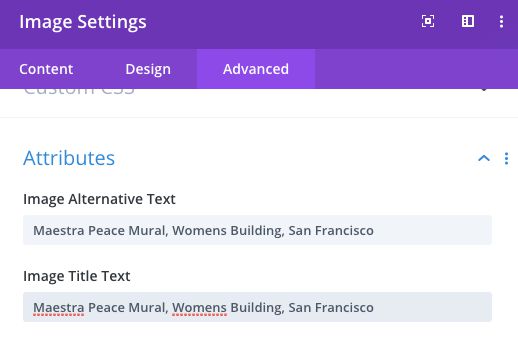
Best Practice In Image Settings
- If an image is just a background beauty or ambience type of image, leave all descriptors off. Those images will be ignored in a crawl.
- While not specifically SEO but in the same area of images settings, link an image to its appropriate destination. Always have the setting to open to a link in a new tab. Why? User experience! They will not lose where they are within your post. More critically, if it is an outside link, they are still on your post in another tab.
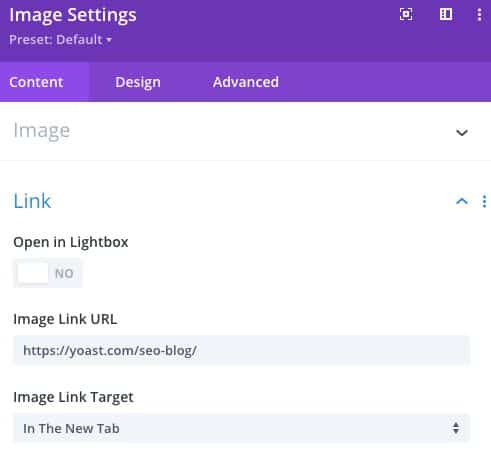
3. Site Speed & AMP Are Central To Any SEO Strategy

Beauty versus Speed
The speed of your site, both on mobile and desktop, is a key factor for an SEO strategy to be successful. It really should load quickly and not be dragged down by excessive styling or pop-ups.
Now, most new bloggers will work very hard to make a beautiful website and blog without actually considering the speed index factor. Yep, guilty as charged! Learn from our mistakes!
Unfortunately, many just jump right in and find a really beautiful layout and theme without realizing they may be in for an uphill battle. Sometimes, a theme is chosen for ease of use, like a drag and drop functionality because they are unfamiliar with WordPress. Just realize there will be a tradeoff.
Three Reasons Why You Should Care About the Site Speed of Your Website or Blog In A Successful SEO Strategy
First, the speed will factor heavily in your rank as well as adversely affect bounce rates. Secondly, a lot of platforms will actually grade and rate your site based on how quickly it loads. Third, just as an obvious societal observation, we all get annoyed when we can’t get to the information we want in a moment. That’s just the world we live in. Accept it and address it. Don’t annoy the people that took the time to come to your site!
So how do you create a fast loading site that is still appealing? Let’s get started, shall we?
Reduce Customization and Styling
Reduce the overall amount of custom styling while maintaining your branding. It is a definite tradeoff between a WordPress theme, customization, and features or plugins in use.
Keep These Rules of the Road In Mind
- If you are not using a particular plugin, get rid if it immediately.
- Do your homework on themes and choose one that is “lightweight”. We have one that is heavily styled but worked diligently to reduce the styling to a minimum. Choose common, google friendly fonts for example.
- Before you load a gorgeous photo, reduce sizing appropriate for web and mobile users. Link here to a full post on this specific topic, How To Find, Size, and Use Stunning Images.
- Keep the ads to a minimum! Place them strategically where they will be seen but not completely disruptive. Feel free to scope where you see ads on our site. Hint: on mobile and desktop, they will actually be different.
Why AMP Matters
So much traffic moves on mobile devices now, you cannot afford to ignore mobile users. Truly, if you have a particularly slow website that will be infinitely worse on mobile devices. You can optimize images, styles and spend countless hours on this aspect while barely moving the needle on your mobile page speed. Eventually, we got smart and did the homework on what to do to have AMP accelerated mobile pages easily served up to this audience.
How To Implement AMP Posts and Pages
In order to provide mobile versions of your homepage, blog posts or specialty pages, you’ll need to implement an AMP plugin. I am definitely not a tech person so there is no way for me to do any of this manually. Now, there may be many more options out there but this is what worked for us.
The Plugin We Used for AMP Pages
The first plugin we activated was AMP for WP. This plugin was a game changer for increasing our mobile speed. It serves up simplified versions of our posts and pages with the quality content you’d expect. In addition, we also have mobile ads running at the top and bottom of posts, increasing our AdSense traffic almost immediately.
There is a fairly simple number of steps to run through to get things up and running, especially if you have relatively few posts to begin with. We activated the AMP for WP, loading all our details and preferred settings. We chose the Swift Theme (free). There are a variety of reasonably priced paid themes available but as a new blogger, our budget is still quite small.
Once the set up was complete, we began the actual tedious work. It was necessary to work through each post. In all honesty, we are still in the process of updating past posts but are nearing the finish line. The process is a little time consuming but well worth the effort.
We activate AMP on each post and update the live post. After, we submit the url through Google Search Console so it can be re-indexed. Now, if you are creating a brand new post, it is as simple as a few clicks once you’re finished with a new blog post. Super simple and easy to do moving forward while you work your way through older posts.
Results Are Results
Our speed index went from the dismal twenties to the mid sixties for our mobiles pages and currently stand at eighty. Now, moving from red or orange and finally green felt like there should have been a standing ovation. We have not quite completed all the relevant posts as yet so it will be interesting where we fianlly land!
As a rule of thumb, you should be aiming for three seconds to load your pages. The closer you get to that goal, the better your chances to rank and gain organic traffic. This is hard to accept but if you make progress in any substantial way, you should be proud. Especially enjoy the fruits of your labor if this is your first go at having a website or blogging.
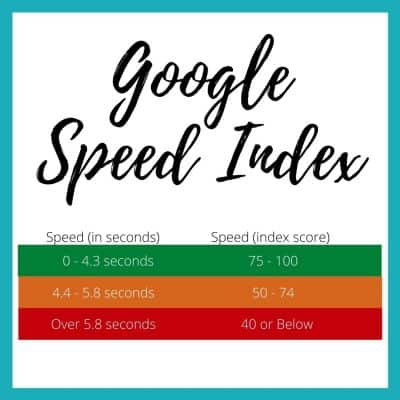
4. Keywords Are Critical to an Effective SEO Strategy
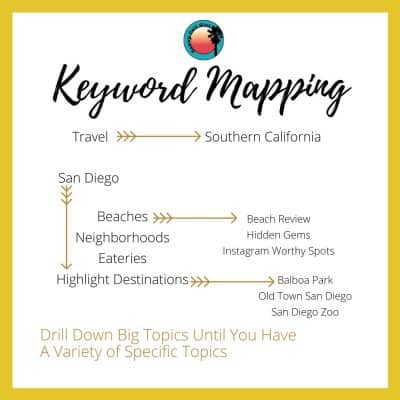
Mapping Keywords
That being said, we did wisen up after a time and have since developed a strategy that seems to be driving better results.
We still write on topics for which we have an affinity. But each post, its keyword or key phrase and related content, is part of a larger roadmap. It’s organized by category topics with posts which are meant to be consumed as part of a series within that category.
Additionally, we work hard to make sure they can stand alone, linking to specific topics discussed elsewhere
How does this relate to keywords?
They keywords are the “outline” of that category essentially. For example, San Diego is a keyword but we have a variety of posts essentially about San Diego. Those topics cover beaches, neighborhoods or eateries. Before you know it, you’ll have lots of topics, associated keywords and even many sub-category topics. This graphic is a visual of how this could work for you.
Compile and Organize Your Keywords As Part of a Larger SEO Strategy
Depending on how you work with information, your keywords could be a visual map, a spreadsheet, a word doc, even as old school as sticky notes on a cork board. However you choose to compile the words and topics, organize them in a way that makes sense to you.
Once and Only Once Please
Use a keyword or key phrase only once, meaning on only one blog post. Why? Google may see very similar content with the same keyword as substantially similar. Consequently, your posts may rank lower in the search results. It’s called keyword cannibalization. Your keyword maps will help you parcel out keywords matched to topics without repeating.
One reason we recommend laying out a roadmap with your keywords is to avoid duplication. If you know where you are headed as you begin to write multitudes of posts, it easier to know what has been utilized and what is coming down the pike.
Google Keyword Planner
So, you may think you’re linking to some type of planning tool to aid in writing your post. Yes, you are but it is cloaked in the ad campaign area of Google services. Most will think it is not available to them if they do not place and pay for an ad but that’s not true. You can go through the steps to get suggestions and cancel out before the end of the process. This link will take you directly to their landing page.
Pinterest Basics
Many bloggers, get a majority of their traffic from Pinterest. Doing research on keywords through Pinterest is also a really simple way to optimize for your highest referral platform. We walk you through that process in another post we’ve already mentioned above, Why Blog Post Writing Is Unique & How To Do It Right!
Yoast Lends A Helping Hand For Free, YOur Best Friend To Stay On Top of Your SEO Strategy
As a new blogger, you may have a lot of questions about how often to use your keyword in your text, headings, whether the keyword has been used before and more. The Yoast plugin will give you cues concerning your blog post. As you write more and more posts, you’ll start to be able to incorporate the suggestions into your writing naturally.
In the beginning, we weren’t sure which plugins were actually useful, free or paid. We also were writing strictly with content in mind, not SEO or even which types of users would be consuming our content. These days, we still write the content we love but really cannot imagine trying to write a blog post blind with smart tech to help.
It is a blessing we do not have to think about whether we have used our keyword at least eight times in the post because we have over 2,500 words (let alone counting those words). We don’t have to keep track what percentage of our images have those keywords in the alt-text. We can just sit down and write better content, faster and with better optimization with a plugin like Yoast.
Keywords versus a Flashy Title in SEO Strategy
This is tough for me as a marketing professional. I want to grab the reader and pull them into my post. At the same time, if no one ever sees the post, what is the point really?
In our post on writing a blog post we dug into the components of a generating a great title, how to do that and a few tips and tools. Just click through the Sweet Spot graphic.
A Few Hacks
Include the “question” words of how, why, where, etc.. Lists also pause people from their scrolling like “six ways to live frugally” for example. Use exceptional words versus very vanilla words. Keep the simple, not too complicated. If all this is too much, get some help with analyzers.
Always, always include your keywords or keyphrase in your title as part of a healthy SEO strategy.
Tools To Analyze Headlines and Titles
Co-Schedule: Optimizes for length, keywords, unique phrases, mix of verbs & adjectives with an easy “score” threshold. Generally speaking, a score of 70 or higher is your goal.
Capitalize My Title: Analyze for Grammar and Punctuation, SEO and Readability. Additionally, if you’ve ever questioned what to capitalize and when, this website will solve that problem once and for all. Not only will it will fix your title, it will lay out the rules of the road for headline punctuation whether in a title or sentence format.
5. SEO Tools
Domain Authority
As a new blogger, your domain authority will score poorly for quite some time. The score is ranked on a 100 point scale with 1 being your day one starting point. This is completely normal precisely because you are new. Don’t worry, if you have great content, a solid keyword strategy, a fast site and mobile friendly pages, no broken links, other sites linking to your content and so forth you will perhaps see changes after the first year. Yes, a year or more. You are ranking among all other sites out in the vast world wide web! Click below to check the free tools available from Moz or via this hyperlink.
Checking Page and Domain Authority
So how do you check your domain authority? You have a number of options. Moz is the one we use but there are many others. Moz is simple, easy to follow and has lots of tutorials that I can consume when I am ready.
I like to review something called Page Authority (PA) in particular. I can see which individual pages are ranking and with what number. Over time, you should see more of your pages in the list and with improving scores. They use the same 100 point scale by the way.
Another way to measure progress is to compare your data to that of a competitor. This is by far the most productive metric as you will never, ever reach 100. You can however, reach a DA of a similar or true competitor.
A Quick Look at Google Search
There are so many tools out there but this doesn’t have to be rocket science, especially if you are just getting started. When you type a search in Google, there are suggestions for completing the phrase for your search. Pay attention to that information. It is gold in terms of what users may be searching for.
There are also additional suggestions that may interest someone doing a search. Our example is San Diego beaches. The suggestions to fill in your search query as well as the boxes below that query should help guide decisions about keywords or subjects to include on a post topic like San Diego beaches.
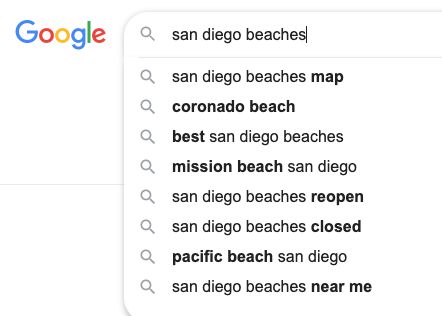

Ubersuggest Anyone?
Another top site used regularly is neilpatel.com and in particular, the feature Ubersuggest. Like many other tools, you can analyze the traffic to your site, including which pages are excelling. I peruse keywords, competitors’ data, run audits on my own site, review site speed and more.
This is just one tool available in your SEO strategy journey to easily track any aspect of your site not already covered by the Google tools already available to you.
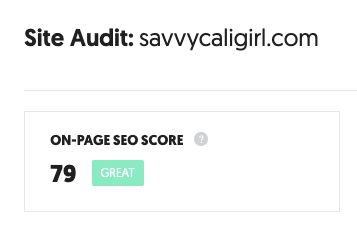

The Last Word on SEO
In the beginning, I was overwhelmed with learning how to work within WordPress, promoting content on social media, tracking our progress and learning absolutely everything as quickly as possible. It one thing to read about blogging and quite another to do it well and actually succeed.
Plugins to Incorporate Into a Healthy SEO Strategy
Here is a list of a few of our SEO related plugins and briefly how they are used. We do have others in use but they are not directly related to SEO.
Yoast SEO: Blog Writing Tools for SEO and the xml Sitemap
Site Kit by Google: Google Search Console, AdSense, Page Speed and Google Analytics
AMP for WP and AMP Theme Framework: Create Accelerated Mobile Pages
Short Pixel: Automatically Optimize Images
Hummingbird: Find and fix page speed issues through optimization and caching policies.
Helpful Free Tools As Part of Your SEO Strategy
Just a few of the free tools mention thus far are below.
Google: Conduct keyword searches
Moz: Analyze your site for broken links, domain authority, keywords, check out the competition and more.
Ubersuggest by Neil Patel: Rate and analyze your site. Compare your site to competitors.
Title Analyzers like Co-Schedule and Capitalize My Title: Optimizes titles for content and SEO
SEO Strategy Key Takeaways
As they say, Rome wasn’t built in a day. You and your blog will “grow up” over the course of your first year. Yes, there will be headaches, setbacks and maybe a few meltdowns. Ultimately, though, there will absolutely be successes, both big and small. What takes you an inordinately, even excessive amount of time in the beginning will be second nature by the end of year one. Those overnight sensations and million dollar get rich quick blogs are few and far between.








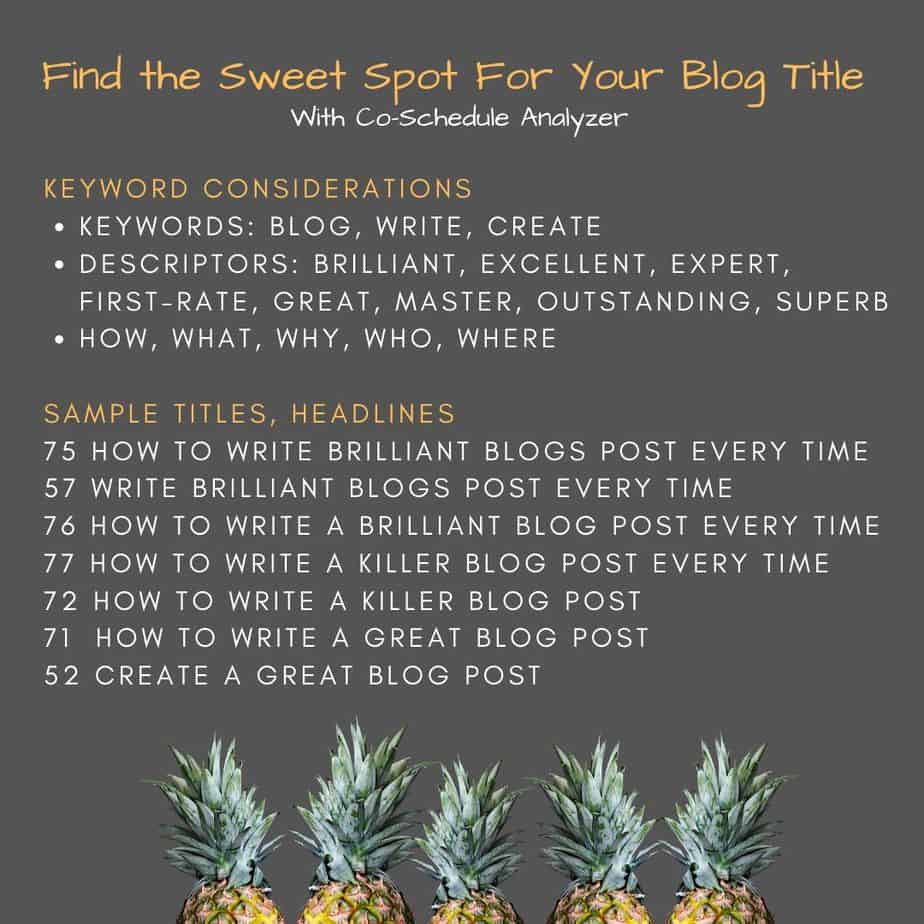






Doing good SEO for a new blog is critical as it will determine the success of the blog later on.
It’s the long term strategy that doesn’t reflect instant gratification but WILL work if your content is good.